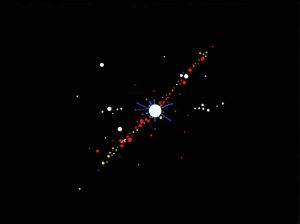In 2025, sky enthusiasts will have the opportunity to witness two significant solar eclipses. However, it’s important to note that both events will be partial solar eclipses, meaning the Moon will cover only a portion of the Sun’s disk. This results in a noticeable dimming of sunlight but not the complete darkness associated with total solar eclipses.
What Is a Partial Solar Eclipse?
A partial solar eclipse occurs when the Moon passes between the Earth and the Sun but does not align perfectly to cover the Sun entirely. Instead, only a segment of the Sun is obscured, creating a crescent-like appearance. The extent of coverage varies depending on the observer’s location, with some areas experiencing a more significant obscuration than others.
The March 29, 2025 Partial Solar Eclipse
The first partial solar eclipse of 2025 is scheduled for March 29. This event will be visible across various regions, including:
-
Northeastern United States: Observers in states like Maine and parts of New York will witness a partial coverage of the Sun.
-
Eastern Canada: Provinces such as Newfoundland and Labrador can expect to see the Moon obscure a portion of the Sun.
-
Greenland: A significant part of Greenland will experience the eclipse, offering unique viewing opportunities.
-
Europe: Countries across Europe, from Scandinavia to the Mediterranean, will observe varying degrees of solar coverage.
-
Northwest Africa: Nations in this region, including Morocco and Western Sahara, will also be under the eclipse’s shadow.
-
Northwestern Russia: Parts of Russia’s northwest will have the chance to see the partial eclipse.
The magnitude of this eclipse, which measures the fraction of the Sun’s diameter covered by the Moon, will vary by location. For instance, areas closer to the central path of the eclipse will experience a higher magnitude, resulting in a more substantial portion of the Sun being obscured.
The September 21, 2025 Partial Solar Eclipse
The second partial solar eclipse of 2025 is anticipated on September 21. This event will predominantly affect the Southern Hemisphere, with visibility in regions such as:
-
Oceania: Countries like New Zealand and parts of Australia will witness the eclipse, with New Zealand expecting up to 73% coverage in certain areas.
-
Antarctica: Observers stationed in Antarctica will have the opportunity to view the eclipse, depending on their specific location.
It’s essential to recognize that during partial solar eclipses, the path of totality—a term used to describe areas where a total solar eclipse is visible—is absent. Instead, observers experience varying degrees of partial coverage based on their geographical position relative to the eclipse’s path.
Viewing Safety Precautions
Observing a solar eclipse requires proper safety measures to protect your eyes from potential damage. Here are some guidelines to ensure a safe viewing experience:
-
Use Certified Eclipse Glasses: Always wear eclipse glasses that meet the ISO 12312-2 international safety standard. Regular sunglasses, no matter how dark, are not safe for viewing the Sun.
-
Employ Solar Filters for Optical Devices: If you’re using telescopes, binoculars, or cameras, ensure they are equipped with appropriate solar filters. Never look at the Sun through these devices without proper filtration, even if you’re wearing eclipse glasses, as the concentrated solar rays can cause severe eye injury.
-
Avoid Homemade Filters: Do not use homemade filters or everyday materials like CDs, DVDs, or smoked glass to view the eclipse. These do not provide adequate protection against harmful solar radiation.
-
Use Indirect Viewing Methods: Pinhole projectors or other indirect viewing techniques can safely project the Sun’s image onto a surface, allowing you to observe the eclipse without looking directly at the Sun.
-
Supervise Children: Ensure that children are supervised and understand the importance of using proper eye protection while observing the eclipse.
By adhering to these safety precautions, you can enjoy the celestial spectacle without compromising your eye health.
The year 2025 offers two remarkable opportunities to witness partial solar eclipses. While these events won’t bring the complete darkness of a total solar eclipse, they still provide a unique chance to observe the dynamic relationship between the Earth, Moon, and Sun. Whether you’re in the northeastern United States, Europe, Oceania, or Antarctica, mark your calendars for March 29 and September 21, 2025, and prepare to experience these celestial events safely.



